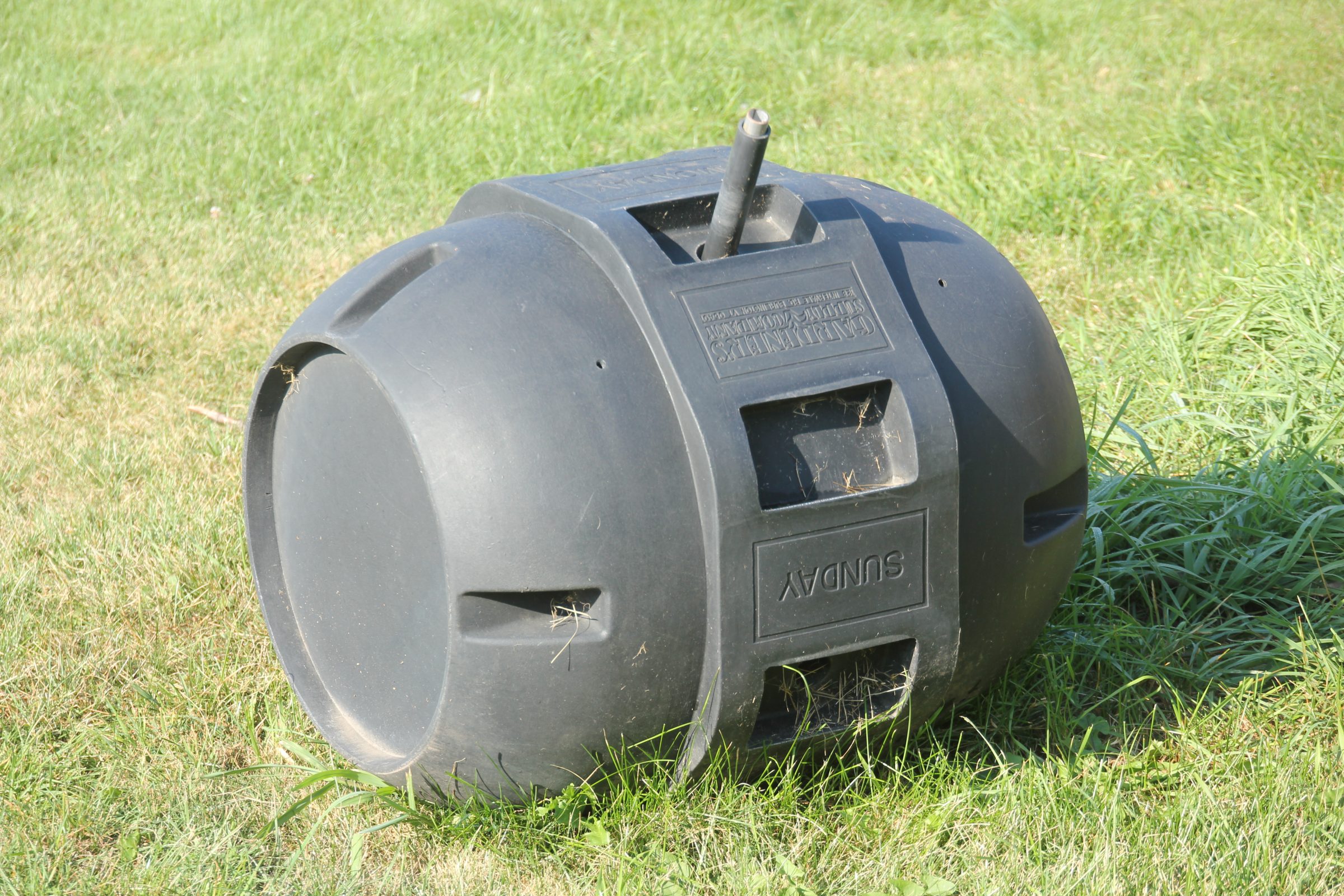
Overview
Home composting is an easy and inexpensive way to create a valuable soil amendment from yard and household waste. Composting means less waste going into the landfill and less need for chemical fertilizers.
While many people simply pile their compost in a heap, others may want to use a bin to contain their compost and speed up the composting process. Compost bins vary in size, use, and cost, whether you purchase a commercial product or build one yourself. This Do-It-Yourself Compost Bin series provides you with all you need to know to build your very own compost bin.
Barrel Composter
The barrel composter (fig. 1) is a fast way to make small batches of compost.
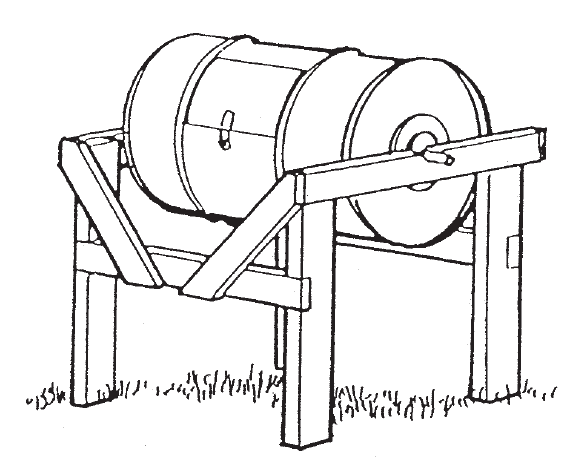
Cost: $$
More with new materials; less if recycled materials are used.
Capacity: Three to four 30-gallon bags of yard materials
Degree of difficulty: ✪ ✪
Some building skills needed
How to construct
Lumber
Use cedar or non-arsenic pressure-treated lumber. Cut the lumber into the following lengths, carefully measuring first to be sure of a correct fit.
Legs: 4 pieces 2 x 4 x 40”
Frame horizontals: 4 pieces 2 x 4 x 29 ¾”
Cross braces: 2 pieces 1 x 3 x 40 5/8”
Corner braces: 4 pieces 1 x 3 x 23 ¾”
Bearings:
- Two pieces ¾ x 7 ½”-diameter wood circles
- Two pieces ¾ x 2 ¾”-diameter wood circles
Hardware
- One drum or barrel, 55-gallon, that has not been used for toxic chemicals (food-grade barrels are best and paint barrels are acceptable)
- Two hinges, 1½ x 2”
- One small hasp
- One steel rod, ½ x 40 ½”
- Eight stove bolts, ¼ x 1 ¼”
- 12 stove bolts, ¼ x 1”
- 28 #10 wood screws, 1 ½”
- One pint black rust-retardant paint
Tools
- Power drill
- Screwdriver
- Pliers
- Saws: saber saw with metal-cutting blade; handsaw or circular saw
- Paintbrush
- Gloves and eye protection
Construction details
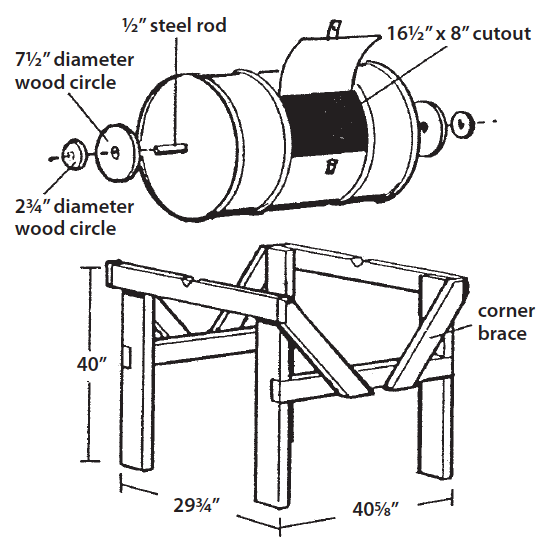
- Drill a ½” hole in the exact center of each end of the drum to accommodate a ½” steel rod (figure 2).
- Make a simple gauge to find the center by cutting a 6”-diameter circle out of heavy cardboard or wood (figure 3).
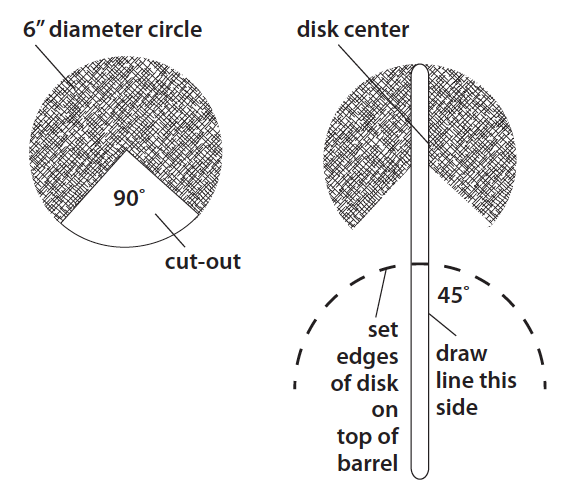
- Draw lines for the opening of the barrel, making sure to round the corners slightly. Drill a ¼” hole somewhere along one of the lines, to start the saber saw. If the barrel has ribs, cut a 1” V-shaped notch on each rib to allow the door to open. Attach the hinges and hasp to the barrel and lid with ¼ x 1” stove bolts.
- Using ¾” wood, cut two 7 ½”-diameter circles (bearings) and two 2¾”-diameter circles. Drill a ½” hole in the center of each, and apply glue to the 2¾” circles. Glue each 2¾” circle to a 7½” one. Temporarily slip them over a ½” steel rod and clamp them. After the glue has dried, remove the bearings, insert the rod through the barrel, and continue to assemble as shown in figure 2. Use four ¼ x 1” stove bolts in each bearing to bolt it to drum.
- To build the support frame, use a corner lap joint to fasten the legs to the horizontal pieces. To make a corner lap joint, remove one-half the thickness of the stock to a length comparable to the width of the stock on the ends of both pieces to be joined. Use two #10 1½” wood screws in each joint. Cut grooves (dadoes) on the legs 23” from the bottom to fit the 1 x 3 cross braces. Cut 45-degree angles at both ends of the 23¾”-long corner braces, and attach them across the corners, as shown, with #10 1½” wood screws. Cut a ½” notch in the center of each top horizontal piece to accommodate the rod.
- Drill several rows of ¼” holes along the bottom of the barrel, underneath the door opening, to eliminate excess moisture. If you use a metal barrel, paint the barrel inside and out with black rust-retardant paint.
Conclusion
Now you are ready to set your bin out in your yard and begin composting! Learn more about making and using compost in the garden as you get started.
Authors: Joe Van Rossum, former Recycling Specialist and Director at the Solid & Hazardous Waste Education Center (SHWEC)
Rev: 2013
Item number: G4020-01
References
Source: Adapted with permission from The Rodale Book of Composting, 1992 by Rodale Press, D. Martin and Grace Gershuny, Editors.
Composting to Reduce the Waste Stream (NRAES-43) Plants and Life Sciences Publishing (PALS), Cornell Cooperative Extension http://palspublishing.cals.cornell.edu/ nra_order.taf?_function=detail&pr_ booknum=nraes-43
Master Composter Resource Manual Cornell Waste Management Institute cwmi.css.cornell.edu/ mastercompostermanual.pdf





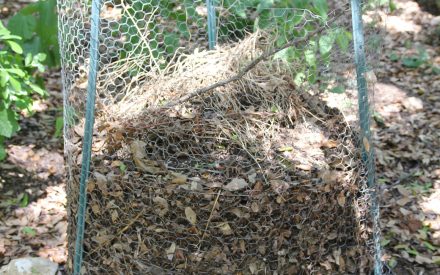 Wire Mesh Composter: Do-It-Yourself Compost Bin Instructions
Wire Mesh Composter: Do-It-Yourself Compost Bin Instructions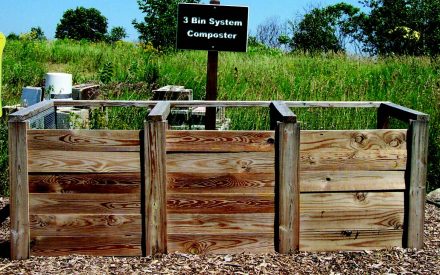 Wood 3-Bin Composter: Do-It-Yourself Compost Bin Instructions
Wood 3-Bin Composter: Do-It-Yourself Compost Bin Instructions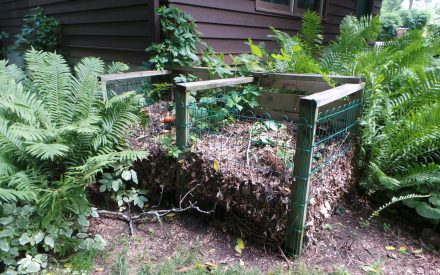 Wood & Wire Composter: Do-It-Yourself Compost Bin Instructions
Wood & Wire Composter: Do-It-Yourself Compost Bin Instructions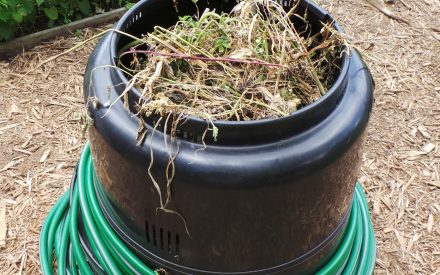 Can Composter: Do-It-Yourself Compost Bin Instructions
Can Composter: Do-It-Yourself Compost Bin Instructions


